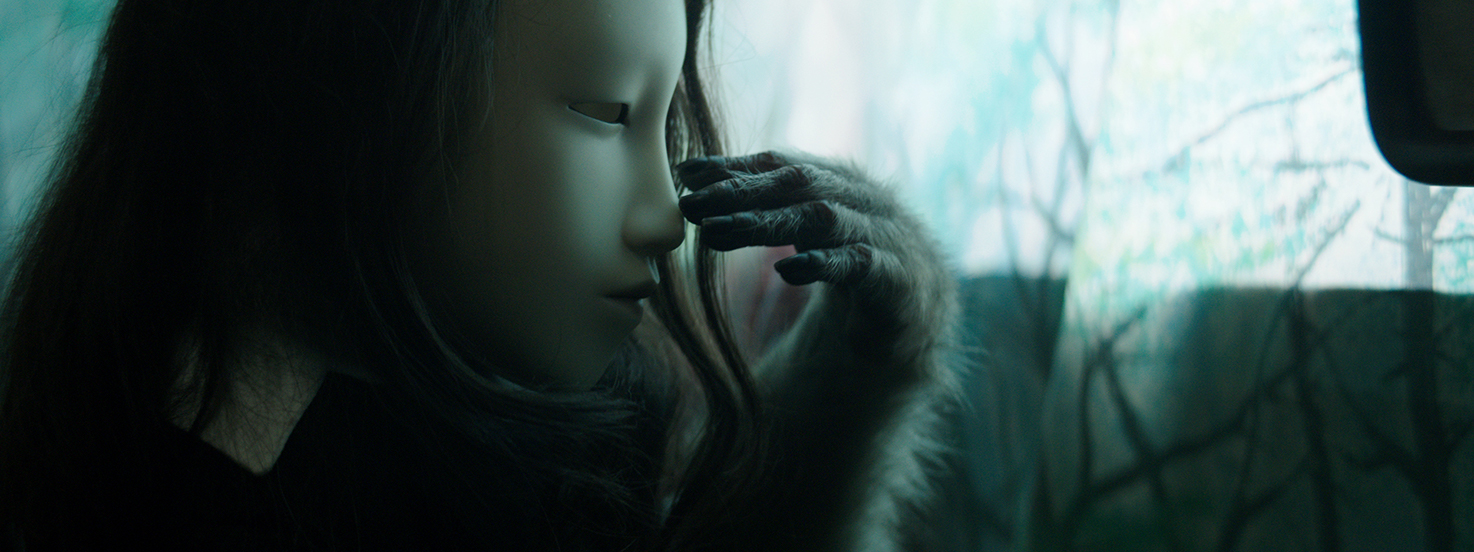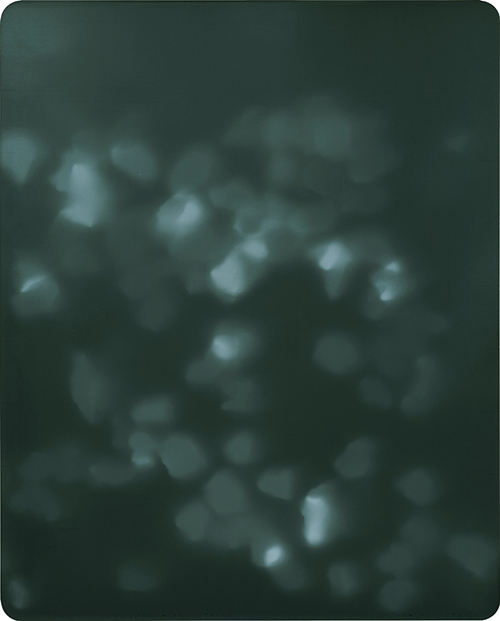
Image courtesy of Pierre Huyghe
PROVIDENCE, R.I. [Brown University] —On Friday, March 17, the David Winton Bell Gallery at Brown University will open two new exhibitions focused on the ecology of sites that have been exposed to nuclear activity: Pierre Huyghe’s “Untitled (Human Mask)” and Gabriel Martinez’s “Mountain War Time.”
The exhibitions, slated to run through May 28, are connected by the artists’ willingness to venture into spaces that were altered by nuclear accidents, in the case of Huyghe, and nuclear explosions, in the case of Martinez. They were organized to coincide with the beginning of the Brown Arts Initiative’s three-year thematic focus on “Arts and Environment,” according to Bell Gallery Curator Ian Alden Russell.
The exhibition of Pierre Huyghe’s “Untitled (Human Mask)” is the New England premiere of the internationally-renowned artist’s film set in the landscape that surrounds Fukushima, Japan, where a 2011 earthquake and tsunami triggered a nuclear meltdown at the Fukushima Daiichi nuclear plant.
“The film confronts us with an eerie reflection of the tenuous divisions between human and animal,” Russell said. The work includes a monkey performing tasks while wearing a mask with a human face. The monkey occupies the post-Fukushima space with a drone, which Huyghe has described as suggesting “a collapse between both biological and cultural distinctions.”
Russell locates a key question at the center of the film: whether it is apocalyptic or redemptive. “Are the animal’s gestures the last remaining relics of human civilization,” he asks, “or a bellwether for a shift away from the anthropocentrism that haunts our world?”
“Untitled (Human Mask)” will be on view in the Bell Gallery, and the opening reception will be held in the List Art Center lobby on March 17 at 5:30 p.m.

Image courtesy of Gabriel Martinez
Martinez’s work in “Mountain War Time” focuses on Trinity, the site near Alamogordo, New Mexico where the first atomic weapon was detonated in 1945. Alongside images of x-ray film exposed to samples of Trinitite—a substance that is created when an atomic bomb explodes over gypsum sands, fusing the granules into a radioactive glass—Martinez’ exhibition includes a video of the recollections of Henry Herrera, a civilian who lived downwind from the Trinity site.
“The images reference a mysterious series of spots that appeared in batches of X-rays in 1945,” Russell said. “It was later discovered that radioactive fallout from nuclear test on July 16 had entered the water system in Ohio. This water supplied the paper mill that provided pulp for cardboard boxes of X-ray film made by Eastman Kodak. The spots on the X-rays became an accidental record of the scale of the fallout zone of the first nuclear test.”
“Mountain War Time” will be on display in the List Art Center lobby. Martinez will give an artist’s talk at the List Art Center Auditorium on March 17 at 5:30 p.m.
Related event
On April 13th, the Bell Gallery will host a panel discussion with the artists and curators behind the project “Don't Follow the Wind” — an ongoing exhibition started on March 11, 2015 inside the uninhabited, radioactive Fukushima exclusion zone caused by the nuclear catastrophe. The collaboration among 12 Japanese and international artists includes new commissions spread over three sites of homes and workplaces lent by former residents. As the zone is closed to the public, the artworks remain inaccessible and largely invisible for years or decades to come. The panel participants will be at Brown for three days for what they are calling an intensive “camp” working on the future plans of their project.
The David Winton Bell Gallery is located in the List Art Center at Brown University, 64 College Street in Providence. Gallery hours are Monday through Wednesday and Friday 11 a.m. to 4 p.m., Thursday 1 p.m. to 9 p.m. and Saturday and Sunday 1p.m. to 4 p.m.
For more information, call 401-863-2932 or visit www.brown.edu/bellgallery.